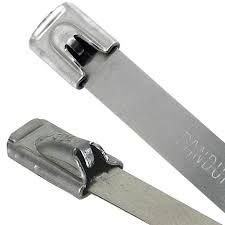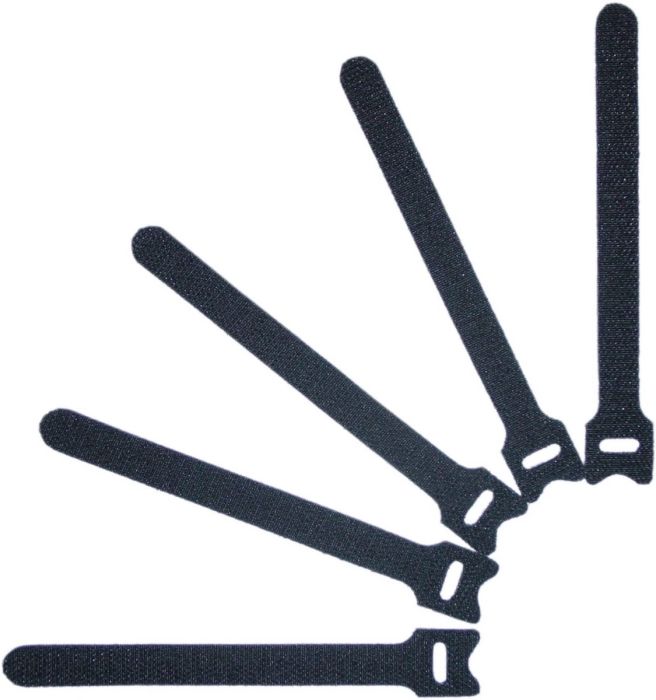When welding creates or reveals a need for cable management, the first instinct might be to grab a handful of plastic zip ties. They’re cheap, fast, and widely available. But can you actually use plastic cable ties for welding-related fixes? More importantly—should you?
While plastic cable ties (also known as nylon cable ties or zip ties) are incredibly versatile in many trades,
they’re not suitable for direct or high-heat applications near welding zones. That said, they can still serve specific purposes in support roles around a weld site—if you understand their limitations.
In this article, we’ll break down why plastic cable ties aren’t designed for welding fixes, where they can be used safely, what the risks are, and which alternatives are better suited for welding-related environments.
Why Heat Is the First Concern
The biggest issue with plastic cable ties in welding environments is
heat. Welding generates extremely high temperatures—far beyond what standard plastic ties can handle. Even indirect exposure to sparks, slag, or radiant heat can weaken or destroy a nylon tie in seconds.
Typical Welding Temperatures
-
Arc welding: 6000°F (3315°C) at the arc tip
-
Base material heat zone: 300°F–800°F (149°C–427°C)
-
Ambient air near weld site: 150°F–250°F (65°C–121°C)
Typical Plastic Cable Tie Ratings
-
Material: Nylon 6.6 (most common)
-
Operating temperature: -40°F to 185°F (-40°C to 85°C)
-
Melting point: ~500°F (260°C)
-
Heat deformation point: Around 200°F (93°C)
These numbers clearly show that
even indirect heat from welding can exceed the safe limits for standard plastic ties, causing them to:
- Deform
- Melt
- Snap
- Release hazardous fumes if burned
Can You Use Plastic Cable Ties in Any Welding Application?
❌ Never Use Plastic Ties to Secure Welded Components
You should
never rely on plastic cable ties to:
- Hold pieces together during welding
- Support or position pipes, rods, or panels near weld zones
- Replace metal clamps or tack welds
- Secure tools or welding cables near hot surfaces
Doing so risks material failure, injury, equipment damage, or fire.
✅ Safe Use Cases for Plastic Ties in Weld Shops
That said, plastic cable ties still have utility in
non-hot zones of welding environments. You can safely use them to:
- Bundle wires, air hoses, or tool cords along walls or under workbenches
- Organize welding cables when not in use
- Attach signage or PPE reminders to shop fences or carts
- Label material stock or finished weldments in cool zones
- Temporarily hold cooling fans or cable guards in place—as long as they’re away from sparks and heat
To do this safely, choose
UV-resistant or heat-stabilized nylon ties and keep them at least 3–5 feet away from active weld zones, depending on the airflow and material temperatures.
Why You Should Avoid Plastic Ties on Welding Fixtures
Welding fixtures are used to hold materials in place during the welding process. These fixtures are exposed to:
- Intense heat transfer
- Flying sparks
- Spatter and slag
- UV radiation
Using a plastic zip tie in this setup would result in:
- Premature failure
- Burn-through or melting onto hot surfaces
- Risk of plastic contaminating weld seams
- Emission of toxic fumes from melted plastic
This can ruin a weld, introduce impurities, and pose safety hazards to operators.
Common Welding Scenarios Where Plastic Cable Ties Fail
1. Tacking Parts with Plastic Ties
Some fabricators mistakenly use ties to hold small tubing or brackets during the initial setup. While the idea is speed, the heat from even a short tack weld can snap the tie, cause misalignment, or let hot parts shift unexpectedly.
2. Bundling Welding Leads
It’s tempting to use large nylon ties to bundle MIG or TIG leads. But if the bundle is ever dragged near a weld station, a stray spark or arc flash can melt the tie, releasing the bundle and creating a
tripping hazard.
3. Cable Routing Along Hot Frames
Routing sensor wires or switches along metal frames that get warm during welding isn’t safe with plastic ties. Even if the
cable itself is rated for heat, the tie that secures it may not be.
Better Alternatives for Welding Environments
1. Stainless Steel Cable Ties
 Stainless steel cable ties
Stainless steel cable ties are
the best alternative when cable management is needed in hot, harsh, or exposed weld zones. Benefits include:
- High heat resistance (up to 1000°F / 538°C)
- Superior tensile strength
- Fire resistance and no toxic fume risk
- Compatibility with most welding shop materials
Ideal for:
- Securing conduit to hot frames
- Mounting wires on overhead steel beams
- Long-term cable installs in welding booths
2. Hook-and-Loop (Velcro) Straps (Away from Heat)

For organizing tools and cables in cool zones,
hook-and-loop straps offer reusability and easy adjustments. However, they still must be kept away from heat, sparks, and UV.
3. Silicone Ties
Some specialized high-temp silicone ties or bands can handle moderate heat exposure. These are rare but useful in niche applications, such as thermal test rigs or insulation wraps.
4. Magnetic Cable Tie Mounts with Steel Ties
In shops with steel frames or panels,
magnetic cable tie mounts paired with stainless steel ties enable welders to temporarily secure hoses or cords without drilling into the surface.
Are There High-Heat Plastic Ties?
Yes—there are
heat-stabilized nylon ties and
polyetheretherketone (PEEK) ties that offer higher temperature ratings:
-
Heat-stabilized nylon 6.6: Up to 221°F (105°C)
-
PEEK cable ties: Up to 500°F (260°C), used in aerospace and automotive
However, even these don’t match the demands of direct welding zones. If sparks or spatter are present, only
metal ties are safe.
Health and Safety Considerations
When plastic ties melt or catch fire, they release toxic fumes, including:
- Carbon monoxide
- Hydrogen cyanide
- Acrolein
These fumes can:
- Irritate lungs and eyes
- Trigger asthma or allergic reactions
- Build-up in poorly ventilated spaces
Weld shops must be especially vigilant about
plastic contamination, as some materials can interfere with weld integrity (especially in aluminum or stainless steel work).
Tip: Always review your facility’s MSDS sheets and PPE guidelines before using plastic ties near any hot work area.
Final Thoughts
So, can you use plastic cable ties for welding fixes? The short answer is
no—not directly. Plastic zip ties are incredibly useful in many roles, but welding zones require materials that can handle extreme heat, spatter, and mechanical stress.
Stick to stainless steel cable ties, magnetic mounts, or high-temperature-rated alternatives for any work near weld arcs, hot metal, or fixtures. Reserve plastic ties for organizing cords and tools far from active welding.
By understanding the limits of plastic and using the right tools for the job, welders and fabricators can ensure both safety and quality—without shortcuts that backfire.
For more insights and tips on cable ties and other related products, explore
cabletiesunlimited.com, get a
quick and free quote, and follow us on our social media communities on
Facebook and
Instagram!
 Stainless steel cable ties are the best alternative when cable management is needed in hot, harsh, or exposed weld zones. Benefits include:
Stainless steel cable ties are the best alternative when cable management is needed in hot, harsh, or exposed weld zones. Benefits include:
 For organizing tools and cables in cool zones, hook-and-loop straps offer reusability and easy adjustments. However, they still must be kept away from heat, sparks, and UV.
For organizing tools and cables in cool zones, hook-and-loop straps offer reusability and easy adjustments. However, they still must be kept away from heat, sparks, and UV.
